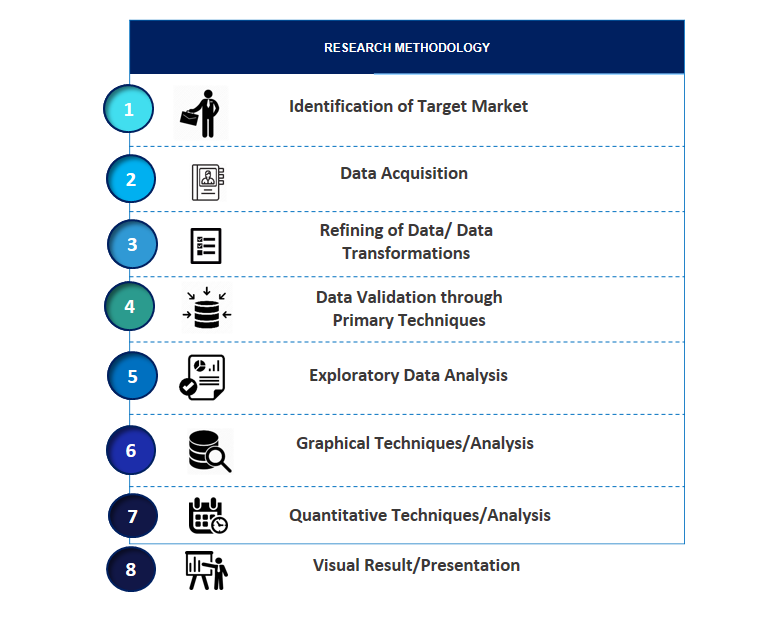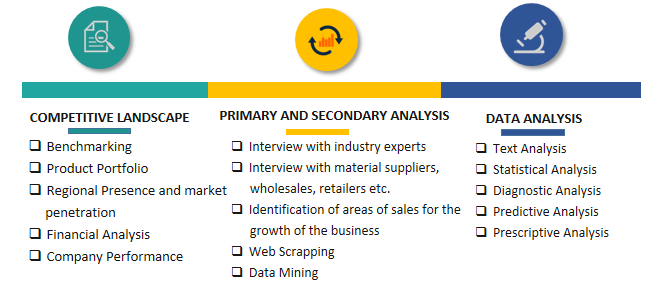mHealth Apps Market Introduction and Overview
According to SPER Market Research, the Global mHealth Apps Market is estimated to reach USD 153.45 billion by 2034 with a CAGR of 15.18%.
Growth in the market is anticipated to be significantly influenced by the increasing use of medical and fitness applications for gathering and monitoring health-related data as well as by the use of smartphones to enhance patient care. Furthermore, the increasing use of smartphones and the internet, as well as growing awareness of the need of preserving physical health and leading better lives, are driving the use of these apps and consequently expanding the market. However, Technological and infrastructure limitations in developing countries, such as inadequate telecommunication devices, slow internet, and insufficient storage, hinder the growth of mobile health apps. These barriers restrict the market's expansion in these regions.
- Enovacom, an Orange Business subsidiary, purchased NEHS Digital and Xperis in September 2023 to improve its healthcare products and increase its presence in the e-health industry.
- Stryker succeeded in acquiring Vocera Communications, Inc. in February 2022. The digital healthcare industry would have several growth prospects as a result of this transaction. Additionally, Stryker's cutting-edge digital healthcare business segment was strengthened by Vocera Communications' inventive product portfolio.
By Type: Medical apps dominated revenue in 2023 and are set to grow the fastest from 2024 to 2030
The medical apps market is expected to grow at the fastest rate in the next years and produced the highest revenue in 2023. This rapid expansion is driven by increasing awareness among both patients and healthcare professionals about the benefits of medical applications in improving communication and overall healthcare outcomes. Furthermore, the growing availability of new medical apps and their easy accessibility within the market are expected to significantly boost demand. Popular examples of such medical apps include Epocrates, Medscape, MedPage Today, 3D4Medical, AHRQ ePSS, and Airstrip Cardiology.
By platform: The iOS platform segment dominated the mHealth Apps Market.
- The iOS platform was the most lucrative segment in the global industry in 2023. This growth is due to the widespread adoption and popularity of the iOS platform among consumers worldwide.
- The Android segment is expected to grow at 15. 10% due to rising smartphone adoption.
By Region: The North America mHealth Apps market dominated the market revenue share
- North America dominated the market in 2023, driven by high healthcare spending, advanced mobile networks, and government support. The US market leads due to a strong tech ecosystem and innovative app development.
- Asia Pacific is projected to have the fastest growth, fueled by smartphone proliferation, rising chronic diseases, and aging populations. India is a key market with increasing smartphone usage and the emergence of new healthcare apps like "Health On Us."
- Middle East & Africa is poised for significant growth, driven by improving internet connectivity and government initiatives. Telemedicine, AI, and patient-centric apps are transforming healthcare access and outcomes. Saudi Arabia is a key market with high smartphone penetration and increasing internet connectivity
Market Competitive Landscape
The Global mHealth Apps Market is highly consolidated. Some of the market players are Abbott, AirStrip Technologies, Inc., Apple Inc., AstraZeneca, AT&T, Google Inc., Johnson & Johnson Services, Inc., Novartis AG, Orange, Pfizer Inc., Qualcomm Technologies, Inc., Samsung Electronics Co. Ltd., Sanofi, Teladoc Health, Inc., Veradigm LLC (Allscripts Healthcare Solutions), Others.
Scope of the Report:
| Report Metric | Details |
| Market size available for years | 2021-2034 |
| Base year considered | 2024 |
| Forecast period | 2025-2034 |
| Segments covered | By Type, By Platform.
|
| Regions covered | North America, Asia-Pacific, Latin America, Middle East & Africa and Europe. |
| Companies Covered | Abbott, AirStrip Technologies, Inc., Apple Inc., AstraZeneca, AT&T, Google Inc., Johnson & Johnson Services, Inc., Novartis AG, Orange, Pfizer Inc., Qualcomm Technologies, Inc., Samsung Electronics Co. Ltd., Sanofi, Teladoc Health, Inc., Veradigm LLC (Allscripts Healthcare Solutions), Others. |
Key Topics Covered in the Report:
- Global mHealth Apps Market Size (FY’2025-FY’2034)
- Overview of Global mHealth Apps Market
- Segmentation of Global mHealth Apps Market By Type (Medical Apps, Fitness Apps)
- Segmentation of Global mHealth Apps Market By Platform (Android, iOS, Others)
- Statistical Snap of Global mHealth Apps Market
- Expansion Analysis of Global mHealth Apps Market
- Problems and Obstacles in Global mHealth Apps Market
- Competitive Landscape in the Global mHealth Apps Market
- Details on Current Investment in Global mHealth Apps Market
- Competitive Analysis of Global mHealth Apps Market
- Prominent Players in the Global mHealth Apps Market
- SWOT Analysis of Global mHealth Apps Market
- Global mHealth Apps Market Future Outlook and Projections (FY’2025-FY’2034)
- Recommendations from Analyst
1. Introduction
1.1. Scope of the report
1.2. Market segment analysis
2. Research Methodology
2.1. Research data source
2.1.1. Secondary Data
2.1.2. Primary Data
2.1.3. SPERs internal database
2.1.4. Premium insight from KOLs
2.2. Market size estimation
2.2.1. Top-down and Bottom-up approach
2.3. Data triangulation
3. Executive Summary
4. Market Dynamics
4.1. Driver, Restraint, Opportunity and Challenges analysis
4.1.1. Drivers
4.1.2. Restraints
4.1.3. Opportunities
4.1.4. Challenges
5. Market variable and outlook
5.1. SWOT Analysis
5.1.1. Strengths
5.1.2. Weaknesses
5.1.3. Opportunities
5.1.4. Threats
5.2. PESTEL Analysis
5.2.1. Political Landscape
5.2.2. Economic Landscape
5.2.3. Social Landscape
5.2.4. Technological Landscape
5.2.5. Environmental Landscape
5.2.6. Legal Landscape
5.3. PORTERs Five Forces
5.3.1. Bargaining power of suppliers
5.3.2. Bargaining power of buyers
5.3.3. Threat of Substitute
5.3.4. Threat of new entrant
5.3.5. Competitive rivalry
5.4. Heat Map Analysis
6. Competitive Landscape
6.1. Global MHealth Apps Market Manufacturing Base Distribution, Sales Area, Product Type
6.2. Mergers & Acquisitions, Partnerships, Product Launch, and Collaboration in Global mHealth Apps Market
7. Global mHealth Apps Market, By Type (USD Million) 2025-2034
7.1. Medical Apps
7.1.1. Womens Health
7.1.2. Chronic Disease Management Apps
7.1.3. Personal Health Record Apps
7.1.4. Medication Management Apps
7.1.5. Diagnostic Apps
7.1.6. Remote Monitoring Apps
7.1.7. Others (Pill Reminder, Medical Reference, Professional Networking, Healthcare Education)
7.2. Fitness Apps
8. Global mHealth Apps Market, By Platform (USD Million) 2025-2034
8.1. Android
8.2. iOS
8.3. Others
9. Global mHealth Apps Market Forecast, 2025-2034 (USD Million)
9.1. Global MHealth Apps Market Size and Market Share
10. Global mHealth Apps Market, By Region, 2025-2034 (USD Million)
10.1. Asia-Pacific
10.1.1. Australia
10.1.2. China
10.1.3. India
10.1.4. Japan
10.1.5. South Korea
10.1.6. Rest of Asia-Pacific
10.2. Europe
10.2.1. France
10.2.2. Germany
10.2.3. Italy
10.2.4. Spain
10.2.5. United Kingdom
10.2.6. Rest of Europe
10.3. Middle East and Africa
10.3.1. Kingdom of Saudi Arabia
10.3.2. United Arab Emirates
10.3.3. Qatar
10.3.4. South Africa
10.3.5. Egypt
10.3.6. Morocco
10.3.7. Nigeria
10.3.8. Rest of Middle-East and Africa
10.4. North America
10.4.1. Canada
10.4.2. Mexico
10.4.3. United States
10.5. Latin America
10.5.1. Argentina
10.5.2. Brazil
10.5.3. Rest of Latin America
11. Company Profile
11.1. Abbott
11.1.1. Company details
11.1.2. Financial outlook
11.1.3. Product summary
11.1.4. Recent developments
11.2. AirStrip Technologies, Inc.
11.2.1. Company details
11.2.2. Financial outlook
11.2.3. Product summary
11.2.4. Recent developments
11.3. Apple Inc.
11.3.1. Company details
11.3.2. Financial outlook
11.3.3. Product summary
11.3.4. Recent developments
11.4. AstraZeneca
11.4.1. Company details
11.4.2. Financial outlook
11.4.3. Product summary
11.4.4. Recent developments
11.5. AT&T
11.5.1. Company details
11.5.2. Financial outlook
11.5.3. Product summary
11.5.4. Recent developments
11.6. Google Inc.
11.6.1. Company details
11.6.2. Financial outlook
11.6.3. Product summary
11.6.4. Recent developments
11.7. Johnson & Johnson Services, Inc.
11.7.1. Company details
11.7.2. Financial outlook
11.7.3. Product summary
11.7.4. Recent developments
11.8. Novartis AG
11.8.1. Company details
11.8.2. Financial outlook
11.8.3. Product summary
11.8.4. Recent developments
11.9. Orange
11.9.1. Company details
11.9.2. Financial outlook
11.9.3. Product summary
11.9.4. Recent developments
11.10. Pfizer Inc.
11.10.1. Company details
11.10.2. Financial outlook
11.10.3. Product summary
11.10.4. Recent developments
11.11. Qualcomm Technologies, Inc.
11.11.1. Company details
11.11.2. Financial outlook
11.11.3. Product summary
11.11.4. Recent developments
11.12. Samsung Electronics Co. Ltd.
11.12.1. Company details
11.12.2. Financial outlook
11.12.3. Product summary
11.12.4. Recent developments
11.13. Sanofi
11.13.1. Company details
11.13.2. Financial outlook
11.13.3. Product summary
11.13.4. Recent developments
11.14. Teladoc Health, Inc.
11.14.1. Company details
11.14.2. Financial outlook
11.14.3. Product summary
11.14.4. Recent developments
11.15. Veradigm LLC (Allscripts Healthcare Solutions)
11.15.1. Company details
11.15.2. Financial outlook
11.15.3. Product summary
11.15.4. Recent developments
11.16. Others
12. Conclusion
13. List of Abbreviations
14. Reference Links
SPER Market Research’s methodology uses great emphasis on primary research to ensure that the market intelligence insights are up to date, reliable and accurate. Primary interviews are done with players involved in each phase of a supply chain to analyze the market forecasting. The secondary research method is used to help you fully understand how the future markets and the spending patterns look likes.
The report is based on in-depth qualitative and quantitative analysis of the Product Market. The quantitative analysis involves the application of various projection and sampling techniques. The qualitative analysis involves primary interviews, surveys, and vendor briefings. The data gathered as a result of these processes are validated through experts opinion. Our research methodology entails an ideal mixture of primary and secondary initiatives.


